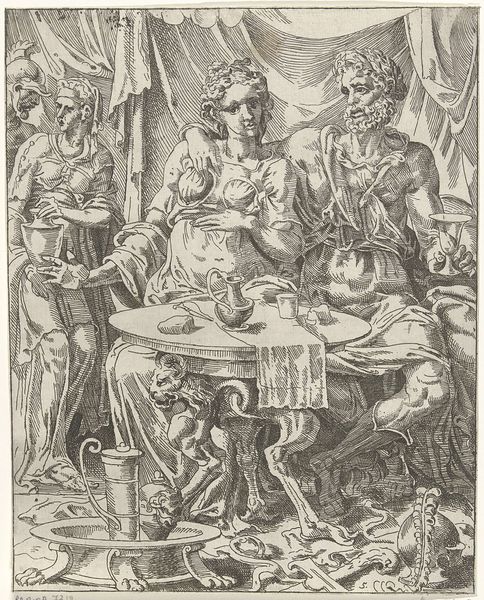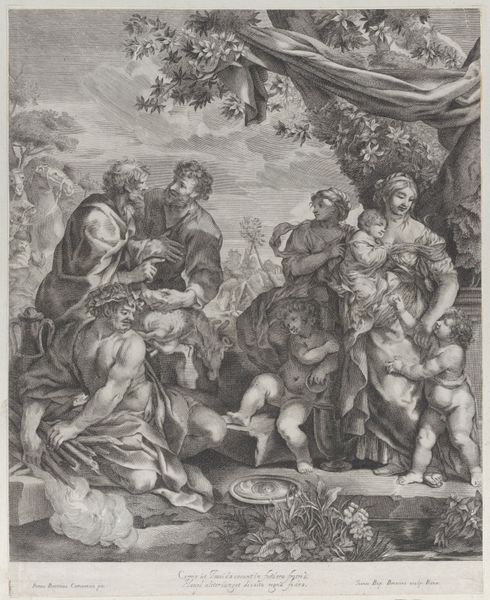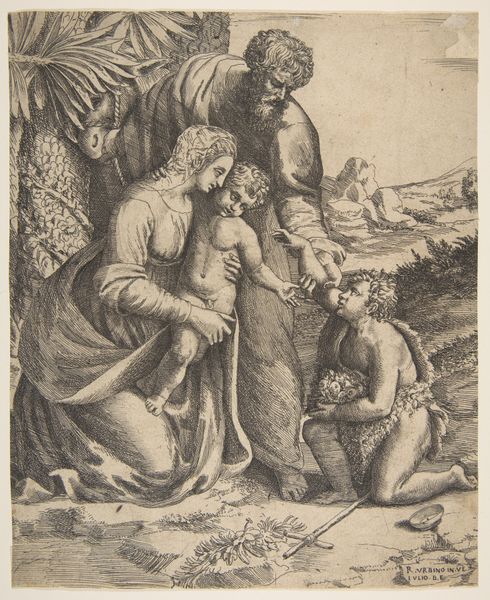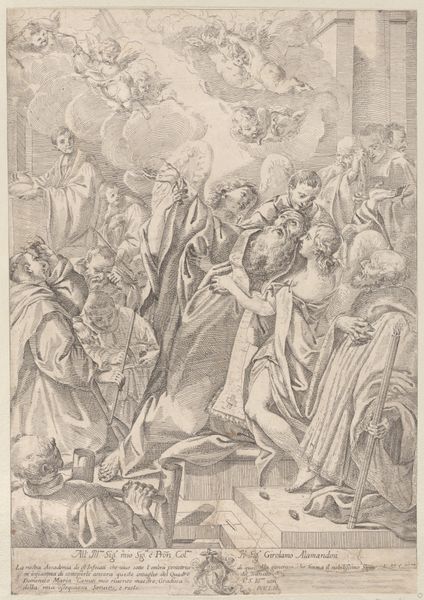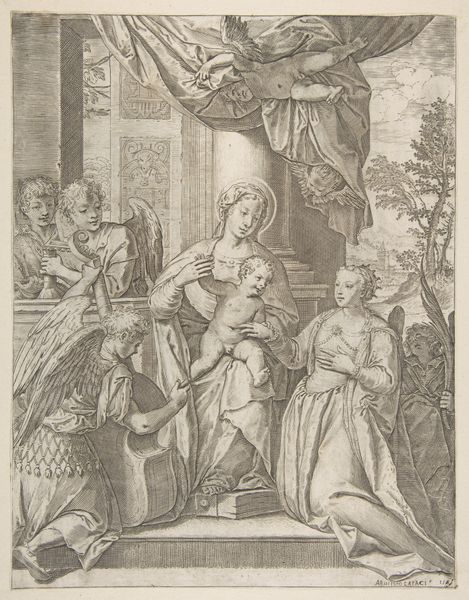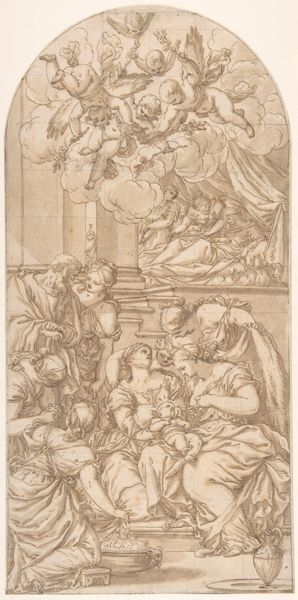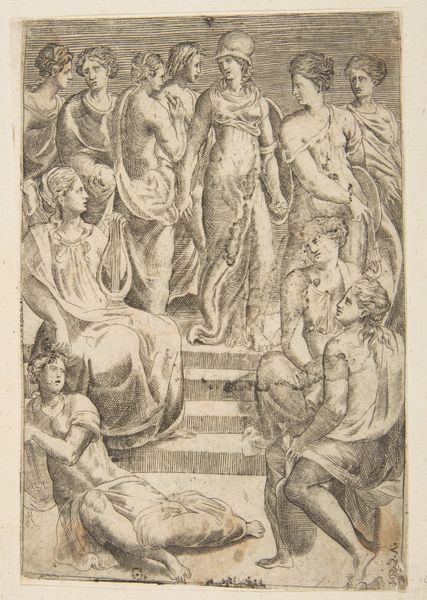
engraving
#
baroque
#
figuration
#
genre-painting
#
engraving
Dimensions: height 266 mm, width 202 mm
Copyright: Rijks Museum: Open Domain
Curator: We're looking at "The Prodigal Son Squandering His Inheritance" by Nicolaes de Bruyn, made between 1581 and 1656. It’s an engraving currently held at the Rijksmuseum. Editor: My first thought is excess. It’s all rich clothes and elaborate ruffs. There's this palpable feeling of sensual indulgence—decadence, really. Curator: Absolutely. Context is key. Consider the Baroque period and the Dutch Republic's prosperity. It represents an exploration of societal anxieties linked to rising commercial power and questions about individual conduct and the value of money. The narrative, of course, centers on wealth squandered. Editor: That aligns with the symbolic language here. Note the placement of the figures under the bower—an artificial Eden suggesting pleasure as a gilded cage. The musicians embody fleeting pleasures, while the women and wine are earthly temptations. Even the fruit on the table functions symbolically as an enticement to indulgence. Curator: I think that focusing on women purely as "temptations" does the image a disservice. Isn’t it also depicting the structures within which wealth can be concentrated through families and marriages and social expectations—and which are inevitably ruptured? This reading reframes discussions about female agency at the time. Editor: But isn't there a danger of anachronism in assigning contemporary identity politics to artwork of that era? Surely the symbol here evokes the ever-present Memento Mori. Think of the contrast between lavish display and moralizing content and the message: "Remember death, even amidst joy". It reflects fundamental existential questions about values and their place in society. Curator: I acknowledge that balance. We should, as feminist art historians, resist presentism. But what interests me is excavating power relations in art—specifically in scenes often read uncritically as simple cautionary tales. How do depictions such as these contribute to the construction, legitimization, and occasional challenging of prevailing patriarchal norms? Editor: I see that—that’s helpful, that tension between historical accuracy and our interpretive lenses now. We cannot completely distance ourselves, but it is so helpful to stay true to context in that historical moment as well. Curator: Yes, precisely. It's about remaining critical and self-aware to expose complexity rather than create closure in our contemporary critical lens. Editor: I come back to this image now reminded that any artistic creation of that time offers layer after layer of interconnected symbolic and thematic references that we have to understand through our experiences today.
Comments
No comments
Be the first to comment and join the conversation on the ultimate creative platform.
